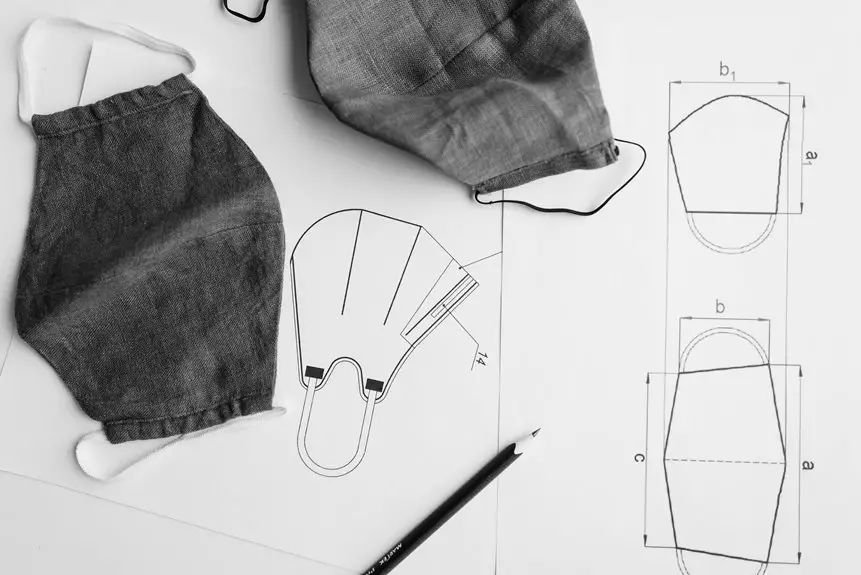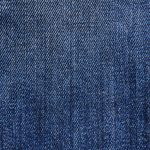When it comes to weather protection, you might think that a higher thread count always means better performance. While it’s true that denser fabrics can offer more resistance to elements, that’s not the whole story. The quality of the fibers and any special treatments also play essential roles. So, what should you really look for when evaluating fabrics for weather resilience? Let’s explore the nuances that could make all the difference.
Table of Contents
Key Takeaways
- Higher thread counts can enhance water and wind resistance due to denser fabric construction, which blocks moisture effectively.
- Low-quality fibers with high thread counts may still fail to provide adequate weather protection; fiber quality matters.
- Fabrics with lower thread counts can perform well for weather resistance if treated properly, regardless of thread density.
- Breathability is often compromised in higher thread counts, potentially trapping heat and moisture, affecting comfort during varying weather conditions.
- Optimal weather protection requires a balance of thread count, fiber quality, and specific fabric treatments to ensure durability and comfort.
Understanding Thread Count and Its Importance
When it comes to fabric, thread count plays an important role in determining quality and comfort. You might wonder what thread count actually means. It refers to the number of threads woven together in a square inch of fabric.
Higher thread counts usually indicate a denser, softer material, which can enhance your experience with comfort and durability. However, don’t be fooled by numbers alone; it’s essential to take into account the type of fibers used, as they can also affect the fabric’s overall feel.
A well-made fabric with a lower thread count might outperform a poorly constructed one with a higher count. Ultimately, understanding thread count helps you make informed choices when selecting fabrics for your needs.
The Relationship Between Thread Count and Weather Protection
Although many people associate high thread counts with softness and luxury, they can also influence a fabric’s ability to protect against the elements. A higher thread count often means denser fabric, which can offer better resistance to water and wind.
However, this isn’t always the case. If the fibers are tightly woven, they might block moisture and improve durability. But if the fabric is made from low-quality fibers, a high thread count won’t necessarily translate to effective weather protection.
Conversely, fabrics with lower thread counts can still perform well if they’re treated for weather resistance.
How Thread Count Affects Fabric Breathability
While a higher thread count can enhance a fabric’s softness, it often comes at the cost of breathability. When fibers are tightly woven, the fabric becomes denser, limiting airflow. This can trap heat and moisture against your skin, which isn’t ideal for outdoor activities or warm weather.
If you’re looking for comfort during active use or in humid conditions, you might want to take into account fabrics with a lower thread count. These options typically offer better ventilation, allowing sweat to evaporate and keeping you cooler.
Evaluating Fabric Quality Beyond Thread Count
Breathability is just one aspect of fabric quality; you shouldn’t overlook other factors that contribute to the overall performance and durability of your outdoor gear.
Consider water resistance, which can be influenced by the type of fibers used and any treatments applied. Look for fabrics that resist abrasion, as they’ll hold up better against rough terrain.
Water resistance and abrasion resistance are crucial for outdoor fabrics, ensuring durability against harsh conditions.
Pay attention to weight—lighter fabrics may be more portable, but heavier ones often offer better protection. Also, evaluate the fabric’s UV resistance to guarantee it won’t degrade under the sun.
Finally, check the stitching and seam quality; even the best fabric can fail if it’s not constructed well. All these factors combined create a reliable outdoor experience.
Seasonal Suitability of Different Thread Counts
When choosing fabrics for different seasons, thread count plays a key role.
In summer, you’ll want lighter, more breathable materials, while winter calls for higher thread counts that provide better insulation.
Understanding these preferences can help you stay comfortable no matter the weather.
Summer Thread Count Preferences
As the heat of summer settles in, choosing the right thread count for your bedding becomes essential for comfort.
You’ll want to opt for a lower thread count, typically around 200 to 400. Fabrics with this range provide breathability, allowing air to circulate and keep you cool during hot nights.
Higher thread counts, while luxurious, can trap heat and moisture, which isn’t ideal for summer. Look for materials like cotton or linen, as they tend to wick away sweat and promote a comfortable sleep environment.
Additionally, lightweight fabrics will enhance your overall experience, ensuring you don’t feel weighed down.
Winter Insulation Needs
Choosing the right thread count for winter bedding can make all the difference in keeping you warm and comfortable during chilly nights.
For winter, you’ll want to look for higher thread counts, typically between 300 to 600. These thicker fabrics trap heat better and provide superior insulation. Additionally, opt for materials like flannel or heavyweight cotton, which enhance warmth without sacrificing breathability.
While higher thread counts are generally more insulating, don’t forget about fabric type. Synthetics can offer better moisture-wicking properties but may lack the cozy feel of natural fibers.
Ultimately, finding the right balance between thread count and fabric type guarantees you stay snug all winter long, making your sleep experience both restful and rejuvenating.
The Role of Weave in Weather Protection
When it comes to weather protection, the type of weave in your fabric can make a big difference.
Different weaves affect breathability, insulation, and overall warmth, influencing how well you stay comfortable in various conditions.
Let’s explore how these factors play a role in keeping you protected from the elements.
Weave Types Explained
Different weave types play an essential role in determining how well fabric can protect against the elements. For instance, a tight weave like twill or satin can offer better water resistance, preventing moisture from seeping through.
On the flip side, looser weaves, such as plain weave, might allow water to penetrate more easily, compromising your protection. The type of yarn also affects durability; thicker, high-twist yarns can enhance the fabric’s strength against wind and wear.
Additionally, specialized weaves designed for outdoor gear can incorporate features like ripstop patterns, which resist tearing. By understanding these weave types, you can make informed choices when selecting fabric for weather protection, ensuring you stay dry and comfortable in various conditions.
Impact on Breathability
While tight weaves can provide excellent weather resistance, they often compromise breathability, making it essential to find a balance. When you’re facing unpredictable weather, you want a fabric that keeps you dry but also allows moisture and heat to escape. A tighter weave can prevent water from getting in, but it can trap sweat and body heat, leading to discomfort.
On the other hand, looser weaves offer better airflow, promoting breathability, but may not fend off the elements as effectively.
Look for fabrics with a balanced weave that combines durability and breathability. This way, you’ll stay comfortable, whether you’re hiking in the rain or enjoying a breezy day outdoors.
Finding that sweet spot is key to ideal weather protection.
Insulation and Warmth
To guarantee warmth in cold weather, the weave of your fabric plays an essential role in insulation. Tightly woven fabrics trap air, creating a barrier that retains heat. When you choose materials like wool or fleece, the structure helps prevent cold air from penetrating, keeping you cozy.
Looser weaves, on the other hand, can let chilly gusts in, reducing warmth.
It’s not just about the thread count; the type of fibers and how they’re woven together matter, too. For instance, a high thread count in cotton might feel soft, but it won’t provide the same insulation as a well-constructed synthetic blend.
Cooling Effects of Fabric and Thread Count
When you choose fabric for hot weather, understanding thread count can greatly impact your comfort. A lower thread count typically means a looser weave, allowing better airflow and breathability. This can keep you cooler as it promotes moisture evaporation, which is vital during sweltering days.
Understanding thread count is key for hot weather fabrics, as a lower count promotes better airflow and keeps you cooler.
Fabrics like cotton with a thread count between 200 and 300 offer a nice balance of softness and ventilation. Higher thread counts, while luxurious, can trap heat and moisture, making you feel warmer.
So, if you’re looking to stay cool, prioritize breathable fabrics with a moderate thread count. Choosing the right fabric can help you enjoy those hot days without feeling suffocated by your clothing.
Stay comfortable by making informed choices about your fabric selection.
Insulation Properties of Higher Thread Counts
When you choose fabrics with higher thread counts, you’ll often notice improved warmth retention capabilities.
However, this can come at the cost of breathability, which is essential for comfort.
The material you select also plays a significant role in how well it insulates, so it’s important to take into account both thread count and fabric type.
Warmth Retention Capabilities
While you mightn’t think about it often, the thread count of your fabric plays an essential role in how well it retains warmth. Higher thread counts generally create a denser fabric, which can trap air more effectively. This trapped air acts as insulation, helping to keep you warm during chilly weather.
If you’ve ever noticed that a thicker blanket feels cozier, that’s the result of increased thread count. Fabrics like higher-thread-count flannel or cotton can provide superior warmth compared to their lower-thread counterparts.
When you choose your clothing or bedding, consider that a higher thread count can contribute to a snugger and warmer experience. So, if warmth is your priority, investing in higher thread count fabrics may be worthwhile.
Breathability Trade-Offs
Although higher thread counts can enhance warmth and insulation, they often come with a trade-off in breathability. When you choose fabrics with denser threads, you might find yourself feeling stuffy or overheated, especially in varying weather conditions. It’s essential to balance warmth with airflow to maintain comfort.
Here’s a quick overview of how thread count impacts breathability:
| Thread Count | Insulation Level | Breathability Level |
|---|---|---|
| Low (200-300) | Moderate | High |
| Medium (300-500) | High | Moderate |
| High (500+) | Very High | Low |
Choosing the right thread count means considering your specific needs to guarantee you stay comfortable, regardless of the weather.
Material Influence on Insulation
Choosing the right material can greatly enhance the insulation properties of higher thread counts. Fabrics like cotton, wool, or synthetic blends can trap more air, providing better thermal insulation.
When you opt for higher thread counts, the tighter weave can create a barrier against cold air, but it’s the material that truly makes a difference. For instance, wool naturally regulates temperature and retains warmth even when wet, while synthetic materials often offer lightweight insulation without bulk.
Remember, not all high thread counts equal warmth; the material’s inherent properties play an essential role.
The Impact of Material on Weather Adaptability
When it comes to weather adaptability, the material of your fabric plays an essential role in determining how well it can withstand the elements. Different materials offer varying levels of protection against rain, wind, and temperature changes.
For instance, synthetic fabrics like polyester and nylon tend to repel water effectively and dry quickly, making them ideal for wet conditions. On the other hand, natural fibers like cotton might absorb moisture, which can leave you feeling damp and uncomfortable.
Additionally, tightly woven fabrics provide better wind resistance than looser weaves. Choosing the right material can mean the difference between staying dry and warm or getting soaked and cold.
Common Misconceptions About Thread Count and Comfort
Many people believe that a higher thread count automatically means greater comfort, but this isn’t always the case. Several factors contribute to how comfortable a fabric feels against your skin.
Higher thread count doesn’t guarantee comfort; factors like fabric type and personal preference play crucial roles.
For example:
- Fabric Type: Cotton, linen, and polyester all have different textures and breathability, regardless of their thread counts.
- Weave Quality: A low thread count fabric with a high-quality weave can feel softer than a higher thread count piece made from inferior materials.
- Personal Preference: Comfort is subjective; what feels soft and cozy to one person might feel scratchy to another.
Frequently Asked Questions
Does Thread Count Affect Durability Over Time?
Thread count can impact durability, but it’s not the only factor. You’ll find that fabric type, weave, and finish also play significant roles in how well your material holds up over time.
Can Thread Count Impact Allergy Sensitivities?
Yes, thread count can impact allergy sensitivities. Higher thread counts often mean tighter weaves, potentially trapping dust and allergens. You might find lower thread counts more breathable, helping to reduce allergic reactions while you sleep.
What Is the Ideal Thread Count for Hypoallergenic Fabrics?
For hypoallergenic fabrics, aim for a thread count between 300 and 600. This range balances softness and breathability, helping reduce allergens while ensuring comfort. Higher counts might feel luxurious but won’t necessarily enhance hypoallergenic properties.
How Does Washing Affect Thread Count and Fabric Quality?
Washing your favorite cotton sheets often can lead to a decrease in thread count and fabric quality. For example, frequent hot washes can weaken fibers, making them feel rough and less durable over time.
Are There Environmental Considerations With High Thread Count Fabrics?
High thread count fabrics often require more resources and chemicals during production, impacting the environment. You should consider sustainable options that balance quality with eco-friendliness, ensuring your choices align with environmental responsibility and personal values.
- Tetron Fabric for Marine Applications: Durability and Use Cases - June 18, 2025
- Tetron Fabric for Outdoor Furniture: Weather Resistance and Care - June 18, 2025
- Tetron Fabric for Wall Coverings: Style and Application Tips - June 18, 2025






